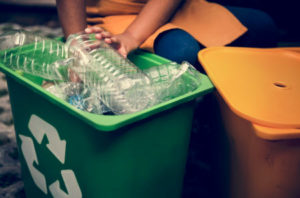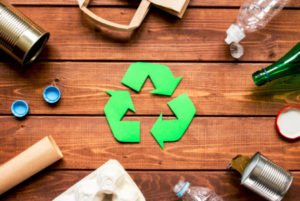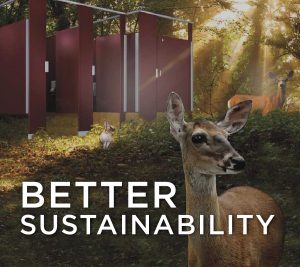It’s important for you to implement a recycling program within your school facility. As the facility manager, it’s up to you to come up with waste management strategies and recycling, so getting students and faculty onboard can help make these recycling plans come into fruition. However, you’ll have to get creative to help inspire and incentivize others to get on board with the program.
Here’s a few tips on ways to promote recycling in educational facilities:
Start a Contest
 There’s no better way to rally students behind an idea than by making it competitive. Speak with administration to brainstorm an idea for a recycling contest that the whole school can get behind. Divide the student body into teams by grade. The key is to figure out the prizes. There can be anything from fun field trips to catered lunches. Once you’ve got the contest parameters and prizes figured out, hang up posters and flyers to invoke school spirit and the benefits of recycling.
There’s no better way to rally students behind an idea than by making it competitive. Speak with administration to brainstorm an idea for a recycling contest that the whole school can get behind. Divide the student body into teams by grade. The key is to figure out the prizes. There can be anything from fun field trips to catered lunches. Once you’ve got the contest parameters and prizes figured out, hang up posters and flyers to invoke school spirit and the benefits of recycling.
Implement a Green Week
Now more than ever, it’s important to educate students and faculty on the benefits of the green movement. Talk to administrators about implementing a green week where there’s educational assemblies and instructions on what sustainability is, the importance of going green, and, of course, the huge benefits to recycling properly. This is your chance to go even further by highlighting recyclable material and how they should be divided, so students can be aware of how to separate their recyclable waste.
Save Your Scrap Paper
Scrap paper tends to be thrown out with other trash when it can be recycled and reused. Students are well aware that paper comes from trees, and they may even know the important role that trees play in our environment and ecosystem. Install a scrap paper bin in classrooms and high-traffic areas in the hallways, so students won’t have a shortage of areas where they can put their scrap and loose-leaf paper.
Utilize Green Materials in Your School Facility
 Recycling is a two-way street, and while it’s important to recycle your products, it’s equally as important to utilize products that have already been recycled to keep the green momentum going. There are a variety of materials that can be used to help you complete this process. Considering replacing your current school lockers and toilet partitions with HDPE (high-density polyethylene) plastic. This plastic is not only recyclable, but it’s also partially made from post-consumer materials. HDPE plastic can also last throughout the years, so you’ll have a durable and reliable material in your school that’s also sustainable.
Recycling is a two-way street, and while it’s important to recycle your products, it’s equally as important to utilize products that have already been recycled to keep the green momentum going. There are a variety of materials that can be used to help you complete this process. Considering replacing your current school lockers and toilet partitions with HDPE (high-density polyethylene) plastic. This plastic is not only recyclable, but it’s also partially made from post-consumer materials. HDPE plastic can also last throughout the years, so you’ll have a durable and reliable material in your school that’s also sustainable.
Hold a Clothing Drive
Plastic bottles and paper aren’t the only items that can be recycled. In fact, clothes are also important to recycle because you can help supply those in need with warmer jackets and clothing to help them throughout the winter months. Inspire students to bring in old coats, shirts, pants, and shoes to donate them to local shelters and churches, who will then ensure that the clothing is being distributed to the people that need them the most.
Getting on Board with School Recycling
As a facility manager, you’re well aware of the importance of recycling and sustainability. Through inspiration and incentives for the students and faculty in your school, you’ll be able to ensure that your recycling program gets the right traction, and you can insure that your school limits the unnecessary waste. Getting everyone onboard with recycling can help inspire others to do the same.
Want to learn more about how to push your school towards a greener direction? Check out this free eBook, Sustainable Building Products: How to Make Your Facility Eco-Friendly from Top to Bottom, from your friends at Scranton Products.



 environment is what managers, designers, and architects yearn for. However, why is sustainability so important to us in the commercial facility industry? There are several answers to this question, so we’re going to explore the many benefits of sustainability and how it can help commercial facilities thrive.
environment is what managers, designers, and architects yearn for. However, why is sustainability so important to us in the commercial facility industry? There are several answers to this question, so we’re going to explore the many benefits of sustainability and how it can help commercial facilities thrive. you can. While bamboo and hemp may be sustainable materials that can be used to build a home, it doesn’t really hold sway in a commercial facility. However, recycled plastic, like HDPE (high-density polyethylene), can certainly be used inside your facility to help add to the sustainability efforts.
you can. While bamboo and hemp may be sustainable materials that can be used to build a home, it doesn’t really hold sway in a commercial facility. However, recycled plastic, like HDPE (high-density polyethylene), can certainly be used inside your facility to help add to the sustainability efforts. still steps that can be taken to increase the sustainability of your facility. A major area that you can focus on is your facility’s restrooms. More importantly, replacing your standard partitions with a
still steps that can be taken to increase the sustainability of your facility. A major area that you can focus on is your facility’s restrooms. More importantly, replacing your standard partitions with a  the long term. Most new hospitals have taken to this approach and begun implementing sustainable design aspects and green materials that can help reduce emissions and energy use. If you’re the manager of a facility or hospital, you’re probably trying to think of ways to cut costs on your energy bill through long-lasting solutions.
the long term. Most new hospitals have taken to this approach and begun implementing sustainable design aspects and green materials that can help reduce emissions and energy use. If you’re the manager of a facility or hospital, you’re probably trying to think of ways to cut costs on your energy bill through long-lasting solutions.


 One of the most efficient ways to reduce your facility’s carbon input is to either reduce your energy use (which is next to impossible) or find ways to use less energy. Any rooms that aren’t being occupied shouldn’t have any electrical equipment running. This includes computers, TVs, and even lights. However, if you don’t think you can run your facility in partial darkness, you may want to
One of the most efficient ways to reduce your facility’s carbon input is to either reduce your energy use (which is next to impossible) or find ways to use less energy. Any rooms that aren’t being occupied shouldn’t have any electrical equipment running. This includes computers, TVs, and even lights. However, if you don’t think you can run your facility in partial darkness, you may want to  If there’s a remodel or renovation project coming up in your facility, you should utilize
If there’s a remodel or renovation project coming up in your facility, you should utilize